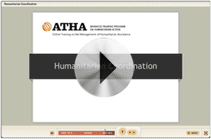Humanitarian Assistance Webcast 8: Human Rights and Humanitarian Action
Description:
Scroll down to view a recording of this event.
Human rights norms are playing an increasingly important role in humanitarian action. Yet there seems to be a growing confusion on the distinct origins and nuances of these bodies of law among practitioners engaged in humanitarian protection. This conflation has sometimes weakened arguments for compliance especially in situations involving intermittent bouts of conflict interspersed with periods of relative peace.
At its core, international humanitarian law (IHL) — the laws and customs of war — was developed to apply only during armed conflict and to provide a minimum level of humanity during such tumult. For its part, human rights law (HRL) — which emerged after IHL — governs the relationship between the state and the people within its jurisdiction, providing a framework to ensure that the state promotes and protects fundamental and indivisible values. While both HRL and IHL aim to recognize human dignity, they do so in fundamentally different ways and with different mechanisms and scopes of application — with HRL applying at all times and IHL only during armed conflict. IHL applies to all belligerent including non-state armed groups while HRL formally obligates only states. Moreover, while they sometimes promote the same standards, IHL and HRL have important variations, in particular regarding what constitutes an arbitrary deprivation of life.
These and other differences may have important consequences for humanitarian actors attempting to devise protection strategies to act in a principled manner across a range of contexts relating to contemporary armed conflicts — whether those conflicts involve multiple states, a single state battling an armed group, or a series of conflicts erupting amid relative peace. For organizations that have both humanitarian and human rights-related mandates, the commonalities and differences between these two bodies of law give rise to additional challenges.
To better understand the underlying complexities and to foster strategic engagement concerning programmatic approaches in these settings this Humanitarian Assistance Webcast examined the tensions, opportunities, and challenges at the intersection of HRL, IHL, and humanitarian action. Expert panelists examined the following questions against the backdrop of complex contemporary conflict-related situations:
- What are the fundamental differences and commonalities between IHL and HRL?
- What implications arise for humanitarian programing as a result of potential tensions between these two bodies of law?
- What strategic approaches would allow humanitarian actors to ensure short- and long-term success of programmatic objectives in dynamic conflict-related settings?
- How does the potential co-application of HRL and IHL facilitate or impede the delivery of humanitarian assistance?
Moderated by:
- Christina Blunt (ATHA Project Coordinator, HPCR)
- Dustin Lewis (Program Associate, HPCR)
Presenters:
Claude Bruderlein(Director, HPCR)
- Michaël Neuman (MSF - CRASH)
- David Petrasek (Associate Professor, University of Ottawa)
Additional Preparatory Module: Human Rights and Humanitarian Action
Participants to the Humanitarian Assistance Webcast are invited to review a self-paced online module on human rights and humanitarian action in preparation for the event. Tell us what you think afterwards on the ATHA Facebook page.
Additional Resources:
Legal Regime Comparison • UNHCR / ICTR, Expert Meeting on Complementarities between International Refugee Law, International Criminal Law and International Human Rights Law: Summary Conclusions, 2011. • International Institute of Humanitarian Law / ICRC, Report of the 31st Round Table on Current Problems of International Humanitarian Law, San Remo, 4-6 September 2008, International Humanitarian Law Human Rights and Peace Operations. • Inter-Agency Standing Committee Task Force on Humanitarian Action and Human Rights, Human Rights Guidance Note for Humanitarian Coordinators, June 2006. • Inter-Agency Standing Committee Task Force on Humanitarian Action and Human Rights, Frequently Asked Questions on International Humanitarian, Human Rights, and Refugee Law in the Context of Armed Conflict, 2004.
Application of Human Rights in Humanitarian Action • United Nations, International Legal Protection of Human Rights in Armed Conflict, 2011. • International Development Law Organization (IDLO), International Law and Standards Applicable in Natural Disaster Situations, 2009. •• Ilia Siatitsa and Maia Titberdze, Human Rights in Armed Conflict from the Perspective of the Contemporary State Practice in the United Nations: Factual Answers to Certain Hypothetical Challenges.
In partnership with:
The objective of the Advanced Training Program on Humanitarian Action (ATHA) is to enhance the knowledge of NGOs and other relevant actors operating in the humanitarian field, and to create greater awareness of the relationship between development cooperation and humanitarian operations in complex political emergencies.
The Federal Department for Foreign Affairs (FDFA) formulates and coordinates Swiss foreign policy on the instructions of the Federal Council. A coherent foreign policy is a precondition for the effective protection of Swiss interests vis-à-vis foreign countries.
Sida works according to directives of the Swedish Parliament and Government to reduce poverty in the world. The overall goal of Swedish development cooperation is to contribute to making it possible for poor people to improve their living conditions.






